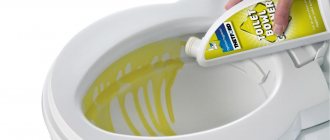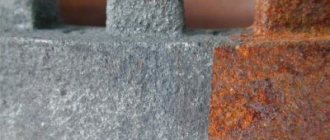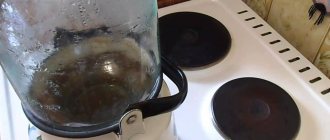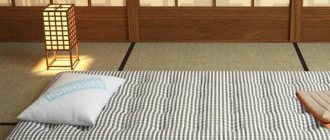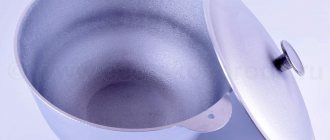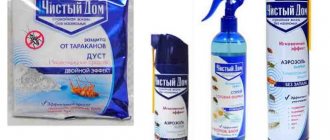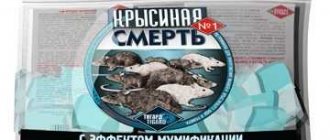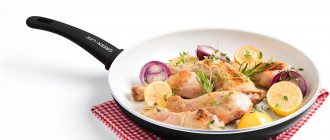Ironing shirts with a regular iron is gradually becoming a thing of the past.
Housewives spend a lot of time ironing every fold, ironing cuffs and collars. Now, in order to smooth out wrinkled clothes, just place them on the mannequin and wait. At this time, you can do other useful things. Tired, labor-intensive ironing is gradually becoming a thing of the past.
In this article we will talk about popular shirt ironing machines that allow you to iron sleeves, collars and cuffs without problems and energy consumption, and about the cost of these devices.
Ironing equipment
Today there are a huge number of ironing devices for caring for various items of everyday and holiday wardrobe. All of them can be used to give shirts a well-groomed look. We invite you to consider the most popular and current devices from this category.
Iron
This type of equipment is present in every family, since it is impossible to imagine caring for clothes without it. Almost all recommendations from the manufacturer apply to the iron, so housewives will not have problems determining the correct ironing mode. This article presents all the rules and tips that you need to follow when caring for blouses and shirts. We will also share step-by-step instructions on how to properly iron the collar, sleeves and cuffs.
Most modern irons are used for both dry ironing without steam and steaming.
Steam generator
This type of technique is almost reminiscent of an iron, but with small distinctive features. The steam generator operates with a constant supply of dry steam in the form of a powerful jet. The use of such equipment guarantees straightening of heavily wrinkled items.
The steam generator is much more efficient than conventional irons in terms of ironing quality.
Steamer
A steam steamer, as the name suggests, irons clothes using hot steam. This type of device also disinfects the product, as it offers fairly high temperature operating conditions. Before ironing the shirt, it must be carefully hung on the trempel
It is important to consider that not all types of fabric can be ironed using this method.
The steamer can be useful for lovers of thin and delicate fabrics, products with a complex cut or a lot of decor.
Steam manken
This option is considered the most innovative. The steam manken is represented by an ironing robot that has the shape of a human torso. The purpose of the device is to quickly dry and smooth wardrobe items that are worn on the upper part of the human body, for example, shirts, blouses and shifts.
The ironing system consists of an inflatable mannequin (doll) with hot air supply and various accessories.
Garment steamer
A compact gadget in which smoothing occurs by softening and straightening fabric fibers under the influence of hot steam.
In addition to decluttering, some models can disinfect items during the steaming process. A steamer is unlikely to smooth out a cotton shirt, and you can forget about creases on your trousers. pros
Minuses
Wash
Before washing, unbutton all buttons, this will reduce the stress on the seams that hold the buttons on the shirt. Also remember to remove the collar stiffeners before washing. This will prevent uneven wear on the collar points.
You also won't have to look for them at the bottom of the drum or among the rest of the wash if they fall out.
Turn all shirts inside out. This protects the mother-of-pearl buttons from chipping on the steel drum and allows cleaning products direct access to underarm stains.
Wash in water at a temperature of 40 to 60 degrees, trying to read the washing instructions on the shirt label in case there are other important recommendations.
How to choose the right temperature?
Having determined from the label the composition of the material from which the product is made, you need to set the temperature on the iron suitable for ironing this material.
If the label has long been worn out and you can only guess about the composition of the fabric, you can use the following information:
- Cotton is ironed at a temperature of +150 °C with the supply of wet steam, pressing firmly on the iron.
- Pressed cotton - +110 °C, without steam.
- Cotton with polyester - +110 °C, steam can be activated.
- Cotton with linen - +200°C, powerful steam boost.
- Linen is ironed at a temperature of +230°C; you can moisten the product with a spray bottle.
- Polyester, viscose, acrylic can withstand temperatures of no more than +120 °C.
- Wool is ironed from the reverse side at +170 °C.
Shirts decorated with embroidery, relief designs, emblems, as well as black items should be ironed only on the reverse side.
Useful tips
Remember that you can only iron a clean, fresh shirt - under the influence of high temperatures, even a subtle odor tends to intensify many times over. Never iron on a sofa: in this case, particles of upholstery or bedspread run the risk of literally sticking to the item. The day before ironing, wrap the dampened shirt in a plastic bag. Within half an hour, the fabric will be evenly saturated with moisture and will be ironed much easier. A piece of cardboard will help maintain the exemplary shape of the collar. Fix the rectangle under the collar and the shirt will retain its businesslike, elegant look for a long time.
Learning to iron a shirt is a completely simple matter. By adopting this skill, you will not only save a lot of time and effort, but also make the most favorable impression on others - like a skilled housewife who knows a lot about housekeeping!
Using the ironing machine
An ironing machine is a mannequin on which items (trousers, shirts) are put on, and then heated air is pumped in.
How to use a mannequin
The work is performed in the following sequence:
- the shirt is put on the mannequin and secured with fasteners;
- turn on the blower and wait for all the parts to straighten, additionally secure;
- turn on the heating, a signal will indicate the end of the process;
- cool the product with cold air.
Next, the finished product is unfastened and removed from the mannequin.
Advantages of the device
Owners of household ironing devices highlight the following advantages of the device:
- speed and safety;
- no damage to fittings and decorative elements;
- Products can be ironed on a mannequin, without drying, immediately after washing.
Important Features
Here are the main characteristics of most household appliances:
- ironing time – 6-8 minutes;
- mains voltage – 220 V;
- power – 1.5 Kilowatt;
- weight – more than 10 kilograms;
- height – about 1.5 meters.
The kit usually includes steam generators, devices for stretching collars and cuffs.
Ironing mannequin
Such an outlandish device could previously only be found in dry cleaners and laundries, where professional equipment is used.
But today, manufacturers have tried and released semi-professional models of mannequins onto the market that can be used at home. The mannequin is a special frame with inflatable elements on a rotating mechanism that imitate the shape of the human body. In household versions there is an inflatable mannequin with two types of shape. The first is for shirts, jackets and jackets, and the second is for ironing trousers.
Simply put a wrinkled shirt or trousers on the mannequin and select the desired operating mode. Then the automation will do everything itself, and within 10 minutes you will get smooth and warm clothes that don’t even need to be dried.
Advantages:
Flaws:
To sum up all the above techniques, the ironing system clearly wins. It is just perfect for easily and professionally ironing shirts.
Care Tips
Today, not every person can spend time ironing things due to their busy schedule. To avoid burdening yourself with additional tasks, you can use some useful life hacks.
- The easiest way to avoid ironing is to prevent your shirts from getting wrinkled during washing. After washing, you should set the spin cycle to gentle and do not wring out items by hand. Next, the products simply need to be hung on hangers and placed on a balcony or in a well-ventilated area.
- The folds can be straightened by putting the shirt on the person. To make the product look beautiful, you need to spray it a little with water and then put it on, carefully adjusting the sleeves.
- It is possible to perform manual steaming using hot water. The item must be hung on hangers and secured in the bathroom so that drops of water fall on it. To obtain the desired temperature, you need to open a hot water tap and direct the stream into the wall. After a few minutes, the shirt can be put on the body, and after a while all the wrinkles will disappear.
The nuances of storing ironed shirts
Most people prefer to store clean and ironed shirts in the closet on hangers. But not everyone has a dressing room of optimal dimensions. In this case, you need to know simple storage methods:
- All buttons on the shirt should be fastened.
- Then turn the product with the buttons down.
- Next, you need to fold the sleeves. To do this, one of the sleeves with a shelf needs to be lightly laid on top of the second sleeve, then, bending it, lowered along the side folded shelf. The second part of the shirt is folded in the same way.
- The lower part of the shirt is folded several times and turned over.
Some more useful tips
To iron your shirt better, you should start processing it while it is still damp. If the fabric is a little dry, you can iron it with steam.
To maintain the shape of the collar, you can apply a little starch spray to it. At the same time, it is more practical to iron several similar shirts at once, so as not to force yourself into a daily routine.
As for handling the iron, it is necessary to drain the water after each ironing (this will keep the bed clean). The steam holes should occasionally be cleaned with a 1:1 solution of water and vinegar. High-quality steam is obtained if clean water without impurities is poured into the iron.
Why is the Laurastar ironing system the best choice for shirts?
Active ironing boardEach installation has an active board and operates in two modes: “Blowing” and “Vacuum”.
The “Blowing” mode distributes the fabric on the board and forms an air cushion, which prevents the seams from imprinting and the formation of creases. With the “Vacuum” mode, you don’t need to twist around and lay down gauze to smooth out creases: the system itself will fix things on the board so that you can quickly make creases on your trousers. Professional iron The lightweight iron weighs just over 1 kg, your hand will no longer get tired from ironing. An important detail: the buttons for supplying steam are located on both sides to make it comfortable for both right-handed and left-handed people to control the process.
DisinfectionAn independent Swiss laboratory has recorded that LAURASTAR's patented microdispersed steam eliminates 99.99% of viruses, bacteria, fungi and 100% of dust mites that remain in fabric fibers even after washing, and the product remains perfectly clean for at least another 24 hours.
Vertical steaming You can quickly steam a silk dress, coat or even curtains thanks to a lightweight iron and a powerful stream of steam.
Powerful steam flow with a constant pressure of 3.5 bar Thanks to the patented double heating technology, the system produces 200 liters of steam per minute. And this steam is dry: you can forget about wet marks on fabrics from conventional steam generators. The flow is supplied under a pressure of 3.5 bar - a precisely selected value in order to smooth out cotton linen in 4 layers, and not damage the delicate fibers of cashmere pullovers and silk blouses.
Convenient designYou don’t need to come up with a “special place” to store the device. When folded, it measures approximately 20 cm in depth (easily fits in a closet) and moves on wheels.
How to iron a man's shirt correctly
After washing, the shirt should be dried flat and ironed better when it is still damp, and not dried out in the sun. Ironing a wet shirt is very easy and much faster. But if you already have a dry shirt, then don’t worry, everything can be fixed. Take a home sprayer for flowerpots, wet your shirt with it, and place it in any bag for an hour or two so that it is well and evenly moistened. If you iron a dry shirt, it will take a very long time to iron, and the folds may remain the same.
If you need to iron clothes made of silk, it is better to iron them dry, but through a thin, slightly damp cloth. Also, do not wet a faux silk shirt, as water marks may remain.
To make the ironing process easier, buy yourself an ironing board and a good branded iron that has all the functions and the right temperature to perfectly smooth out all the wrinkles and make your clothes perfectly even. To avoid stains, do not forget to change the water in the iron and clean the soleplate. It is better to buy distilled water, it will definitely not leave traces.
Mostly, shirts begin to be ironed from the front side. And from the inside out they iron dark-colored shirts with patterns and embroidery. If you iron on black fabric from the front side, there is a possibility that shiny stripes will remain, but if there is a need to iron from the front side, then you can lightly walk over the surface with steam without touching the fabric. Also, items made from shiny fabrics should be ironed from the inside out so that they do not become dull.
What mode is best to iron shirts?
The choice of mode depends on the quality of the fabric in order to burn it and not spoil the product. If you have to iron a cotton shirt, then you need to iron it at a temperature of 140-150 degrees with steam and light pressure from the iron.
Iron a shirt containing cotton and polyester at a temperature of 100-110 degrees, and use a little pari. If the fabric is linen, then set the temperature to 200-230 and use a little steam, and if the fabric is cotton and linen, then you need to turn it on at 180-200 degrees, a lot of steam and press the iron hard. Iron viscose shirts at 120 without steam.
Ironing procedure for men's shirts
A men's shirt should be ironed starting from the collar, then the cuffs, sleeves, placket, front and finally the back. You should always iron the small parts first, and then the large ones. When ironing large parts, make sure that the product lies flat and move the iron in the direction of the grain.
The collar is ironed from the inside out from the corners to the middle, and then do the same action on the front side. Do not bend it or iron it like this. Long sleeves should be ironed from the cuffs on both sides. If the cuff is double, then it should be unfolded and ironed along the bend on all sides, folded to the required width, and ironed along the bend so that the loops lie on top of each other.
During ironing, the sleeve needs to be folded in half so that the seam is in the middle; first of all, you need to smooth out the seam, and then the sleeves on both sides. If the ironing board includes a board for ironing the sleeves, then you can simply scroll them in a circle. The front of the shirt is ironed immediately from the front where the buttons are and the top is ironed with the yoke. You need to iron the other side of the shirt in the same way. The back should be ironed from the right side of the seam to the left, from left to right.
Classic iron for ironing clothes
There is probably not a single family that does not have an iron. It is the most affordable and at first glance easy to use. Consists of a metal platform with a built-in heating element, water tank, cable and thermostat. Modern models also have a steam function and vertical steaming, which makes ironing easier. You can iron a shirt, but you have to be an expert and get used to it. pros
- Takes up minimal space in the apartment.
- Easy to move from room to room.
- The most compact models (and there are some) can be taken with you on a trip.
- It's inexpensive.
- The device with water becomes massive, the hand quickly gets tired.
- The volume of the water tank does not exceed 400 ml, so you have to constantly add liquid.
- The cord may not be sufficient for ironing bed linen.
- The steam comes out under slight pressure, so it will not be possible to smooth out heavily wrinkled fabric.
- Things made of thin fabric deteriorate when they come into contact with a heated sole.
- You need to buy an ironing board.
Minuses
Ironing classic suits
To avoid a shiny effect, suits with a classic cut must be ironed using moistened gauze that covers the fabric.
To iron the sleeves, use a small auxiliary part of the board; first they are ironed from the inside, then from the front side.
Next, they move on to ironing the rest of the jacket or jacket in order: top, floors, collar, back, lining, sides. However, if you hang your jacket in the bathroom over steam and leave it for a while, you can do without ironing.
If you have to iron the jacket once and wear it for quite a long time, then you will have to iron the trousers almost constantly, carefully ironing the creases. First, iron the trousers from the inside out, starting with the pockets and seams. The trouser legs are ironed separately, starting from the bottom: first the inner seams, then the outer ones. Then they are mixed onto the trouser waistband.
Most popular cars
Such machines were invented recently, but the choice is quite large; there are manufacturers in different countries, such as :
- Italy,
- Germany,
- Spain,
- China.
Among the assortment, there are 3 models that are particularly popular.
Siemens Dressman TJ 10500
This model is made in Germany . The following qualities are worth noting:
- small sizes: 120x37x45;
- polyurethane shirt mannequin, designed for all sizes from XS to 4XL;
- 12 programs differing in time, temperature, boost power;
- After drying, it cools the shirt;
- maximum power 3,400 W;
- price from 60,000 rubles;
- drying time with ironing from 5 to 30 minutes.
Effie
It is a steam generator in the form of a small cabinet and has the following qualities:
- simultaneously holds up to 12 items of clothing;
- processing time for one item – 6 minutes;
- suitable for all types of fabric;
- universal – you can place underwear or socks;
- compact – 108 cm high, 80 cm wide, 25 cm deep;
- price from 27,000 rubles;
- easy to manage;
- mobile.
EOLO SA01
It is a small desktop device:
- You can add a mannequin for trousers to the set, in addition to a mannequin for shirts;
- doll size range from 38 to 58;
- light – weight is 6 kg;
- power – 1,500 W;
- processing time from 6 to 8 minutes;
- works with hot and cold air;
- when unfolded it is 110 cm in height, when folded it is very compact - 52 cm in height;
- there are no restrictions on types of fabric;
- cost – from 60,000 rubles.
Important nuances
There are a few additional points to consider:
- After washing, the shirts are thoroughly shaken, straightened, and dried on hangers, with the collar in its natural position and the sleeves stretched out without wrinkles.
- If ironing is not possible right away, the shirts are carefully folded so that the collar and cuffs do not wrinkle - they are the most difficult to iron.
- Ironing sleeves is the longest and most difficult. If the shirt is worn only under a jacket, you can leave the arrows. In any case, the cuffs are brought to perfect condition.
- It is better to iron dark shirts from the inside out so that there is no shine or tarnish left.
Embroideries and labels are ironed carefully, through the fabric, from the wrong side. It is better not to touch them with a very hot iron.
Ironing step by step
The collar is the first thing people will notice. When you put on a shirt, it is necessary that it stands and is carefully ironed
When ironing a long-sleeved shirt, avoid creating creases; they are not needed for shirts.
Collar
- start this process from the inside to avoid smoothing out the folds;
- smooth out the front part of the collar;
- Do not iron along the fold.
The collar is the first thing people will notice. When you put on a shirt, it is necessary that it stands and is carefully ironed
Cuffs
- The cuffs must be ironed on the front and back sides;
- give the cuff the required shape;
- iron along the fold.
The cuffs are one of the first places on a shirt that people pay attention to, so they need to look impeccable.
Sleeves
- fold the sleeve along the seam and place it on a flat surface;
- start ironing the item from the shoulder to the cuff;
- turn over to the other side and iron again;
- do not iron the sleeves close to the edge to avoid creases;
- repeat all steps with the second sleeve.
If in an office or other place there is no dress code regarding wearing jackets, then your sleeves will be visible to everyone
It is important that the sleeves are ironed and there are no arrows on them
Where and how to purchase the device?
Large hardware stores, such as DNS, for example, have a large selection of ironing machines.
You can order directly from the manufacturer, but they are also available in many online hardware stores. Some options are offered on such a popular resource as aliexpress.com. When purchasing, you should pay attention to the manufacturer .
Better quality cars are offered by manufacturers from Italy and Germany. If you are interested in a low price, then you should sacrifice quality here and purchase the product from a Chinese manufacturer.
It is also worth paying attention to the power of the ironing machine. This determines how quickly the item will be dried and ironed.
How to choose the temperature regime?
If you set the heating temperature of the iron incorrectly, there is a risk of finishing ironing ahead of schedule, and, alas, not due to good skill. Each fabric underlying clothing has its own characteristics, so an individual approach is very important here.
- If the shirt is made from a mixed material (for example, cotton + polyester), it makes sense to play it safe and limit the mode to only 110 degrees;
- viscose shirts can easily withstand temperatures up to 120 °C;
- natural fabrics respond to at least 150 °C (this is the optimal heating for cotton), and in the case of linen, even 220-230 °C. The combination of both types requires compliance with the “golden mean”: from 180 to 200 degrees;
- Ironing silk shirts is a delicate and delicate matter. In this case, you should stick to only 80-110 °C, depending on the specific type of matter. By the way, the same rule applies to chiffon blouses;
- Denim fabric is divided into softer and rougher. Accordingly, the temperature will be 150 or 190 degrees;
- Wool shirts are always ironed through the fabric at 110 degrees. In this case, they try to minimize contact with the sole of the iron - steaming in a vertical position is preferable.
It should be noted that steaming is not applicable to all types of fabrics - for delicate silk, polyester and chiffon, such an effect will be disastrous. In a moderate amount, pairs are used for processing viscose, but you don’t have to worry about linen or cotton shirts at all: they always withstand the procedure with dignity.
Floor-standing (vertical) steamers
RUNZELPro-300 TurboSteam
pros
- quite powerful;
- stable;
- a large set of additional accessories;
- large volume of water tank;
- heats water quickly;
- several operating modes;
- height-adjustable stand (telescopic);
- The cord rewinds automatically.
Minuses
- The cord is a little short.
From 15750 ₽
It is no coincidence that this steamer was included in the rating of clothing steamers. An easy-to-use, powerful vertical steamer. Works great with ruffles and folds. He irons collars, cuffs and pockets with a bang. The rack holds hangers well even with heavy clothes. With a full tank, the device will work uninterruptedly for 1.5-2 hours. Then it will turn itself off. Steam is supplied evenly, depending on the selected mode. Thanks to this, the steamer can handle almost any crumpled item. In addition to ironing, the device will remove food and sweat odors from clothes.
Grand Master GM-S-18
pros
- high build quality;
- strength;
- affordable price;
- power;
- several operating modes;
- mobile but stable stand;
- large tank volume.
Minuses
- short hose.
From 10900 ₽
These are very good and durable home steamers. It has a large tank capacity, as much as 3.2 liters. Fast water heating. Powerful steam jet that is conveniently adjustable. The sleek, slim design of the device allows it to not take up much space. A special plus to the creators for the automatic shutdown function. For parents with small children in the house, this is a very important nuance.
MIE Magic Style
pros
- telescopic double stand;
- easy to use;
- high quality workmanship;
- heats up quickly enough and does not “spit” water;
- removable water tank.
Minuses
- does not perform its main function well - steaming.
From 12590 ₽
The device is more likely to be useful to the owner of a wedding and evening dress salon than to a housewife with two children. It is ideal for refreshing an item after a long period of storage in the closet. It will also give a marketable appearance to things that cannot be ironed: clothes with rhinestones, ruffles and decorative folds. Removes the unpleasant smell of a coat or jacket. If you steam a fur coat and other fur products with it, the result will not be long in coming. The fur will become fluffy. But for steaming shirts, blouses and trousers, the steamer is not very effective. Doesn't work well with items made from coarse, dense fabrics. The cord is not long enough to steam curtains and curtains.
Kitfort KT-915
pros
- there is horizontal ironing;
- works quite quietly;
- stable rod;
- 5 steam modes;
- transparent container for water;
- the device has a display;
- transparent container for water.
Minuses
- narrow trouser placket
- narrow access to boiler flushing;
- no auto power off function;
- no water filter.
From 6600 ₽
This device is unlikely to replace an iron. He is only able to bring clothes to mind. It will steam collars, cuffs and other places where the iron cannot reach. It will remove foreign odors from shirts worn once or twice, refresh them and give them a neat appearance. Will put things made of delicate fabrics and evening dresses in order. The steamer has wheels to make it easier to move the device. When steaming, water does not splash onto clothes and does not leave stains.
Iron the front and back of the shirt
When processing the shelves and back, you need to carefully iron the seams. To avoid creases, the fabric should be slightly stretched. Before you start processing the back, you need to iron the shelf on the side of which the buttons are located. To do this, you need to walk the nose of the iron along the space located between them. In some products, the strip is also ironed from the inside out.
Then place the product with the wrong side up, iron the seam near the collar and begin to move the device down, with the blunt side of the sole forward. This will allow you to stretch the material a little and remove the “waves” that appear on the bar.
After ironing the front, move the shirt so that the side seam of the armhole is placed on the ironing board and iron it. Then, moving the product, iron the side seam and back. To avoid the formation of folds in the seam area, the material should be slightly stretched. Having ironed the back, you should move on to the shelf with loops: iron it at the very end.
What will you need?
It is impossible to iron a shirt without special equipment. Therefore, before you start ironing the product, you need to prepare the following:
iron with steamer. If this function is not available, you can use a spray bottle with water
It is important that the base of the device is clean, free of soot, scale and rust. A dirty iron can ruin a shirt, especially a light-colored one.
ironing board with cover
An additional advantage will be the ability to adjust its height. If you can’t use the board, you can replace it with a flat table covered with a light, dense fabric without a pattern.
stand for ironing sleeves of shirts and sweaters. It usually looks like a small ironing board and comes with it. This is not a necessary device, but it will make ironing sleeves and cuffs much easier, faster and with better quality.
ironing spray. These products can be bought at a household chemical store or made independently from available ingredients (a solution of 1 tablespoon of starch in 1 liter of water). Thanks to them, the ironing effect lasts much longer, and the process itself becomes easier.
vertical steamer. They can easily smooth out wrinkles and bruises without the risk of burning the product.
office clips. It is not necessary to use them. Clips will help to secure the sleeves evenly if you need to make arrows on them.
You will also need a little patience and free time. You cannot rush in this matter, because there is a risk of ironing the shirt poorly or burning it.
Ironing system for clothes
Steamer, ironing board, steam generator, professional iron - all this is combined in the ironing system.
It is universal, easy to use, performs many functions and provides professional care to your clothes. It allows you to iron your shirt quickly and easily. You can still have time to make perfect creases on your trousers, thanks to the active ironing board. pros
Minuses
Shirt ironing options
And here in front of you is a wrinkled shirt, and an iron in your hands. If the shirt is too dry, then ironing it will be a troublesome task, and you will not complete this job quickly. This problem can be solved in several ways: the best solution to the problem is when you have a steam generator iron at home, ironing a shirt will not be difficult for you, the item will be easily and simply ironed perfectly, without much effort. You can use a spray bottle, or hang the shirt in the bathroom for a couple of minutes, turn on hot water, and the steam effect will moisturize the item and make it easier to iron.
Steam will make your shirt iron out much easier.
How to iron a shirt as quickly as possible
You may not learn how to iron a shirt, but what to do if you are short on time and need to iron the shirt. With the help of simple tips, you can easily cope with this problem:
- When washing, do not spin. When you take your shirt out of the machine, you don’t need to wring it out, just hang it up. During natural drying, it is unlikely to wrinkle and you will not need an iron.
- Put the wet shirt on yourself; as it dries, all the folds will straighten out without outside help.
- Exposure of the shirt to steam is a good option in this case. Steam the shirt with an iron and it will quickly smooth out, leaving no wrinkles.
Which device is best for home use?
To make the right choice between an iron and a steamer, you need to understand how often you need to iron your clothes:
- For those who dress in office style every day or iron their children's school uniforms, a steamer will come in handy. But it is necessary to take into account that the creases on the trousers will have to be ironed.
- If there is no need to regularly iron your wardrobe items , there is no point in spending money on purchasing state-of-the-art equipment. You can limit yourself to buying an iron with a water tank - it can handle wrinkles on shirts or dresses quite well.
- Families who often go on business trips can purchase a small travel iron for travel and a steamer for home use.
For your information! Don't forget about the financial side of the issue. A good iron can steam things better than a cheap steam generator with low power.
Solving common problems
Shirts made from compressed fabric are never ironed, but if such a mistake has already occurred, there is a sure way to save your favorite item.
- Place the shirt in a bowl of cool water - when it is completely wet, wring it out and place it on a flat surface.
- Align the parts of the product, and then begin to manually form folds, starting from the center of one of their sides. The depth of the “wrinkles” should be approximately 2.5 centimeters.
- Now you need to involve an assistant in the process. Twist the shirt with a rope in opposite directions - the result is a tight spiral. To prevent it from falling apart, secure the ends with cotton rope.
- Let the shirt dry directly in this state, it is recommended to put some kind of weight on top.
Often, after ironing, shiny spots form on the fabric. You can also successfully fight them:
Rub dry salt onto the shiny area. If this does not help, mix a spoonful of salt with the same amount of ammonia and two tablespoons of water: treat the affected fabric with a dampened sponge, then rinse with warm water and iron through a damp cloth. If we are talking about delicate fabric, you can try onion juice: divide the peeled onion into two halves and rub the shiny areas. The shirt will then need to be washed again. Prepare a vinegar solution (1 cup of vinegar per 3 glasses of water). Dampen the shiny prints, and later, while ironing, spray the fabric again from the sprayer (turn the iron to steam mode). Baking soda will take care of removing shine from silk and wool fabrics: mix a little water and spread the paste over the stained area. When the composition dries, sweep off the powder with a soft brush and rinse with cool water. You can use a regular soap solution to remove excess shine from black fabric: moisten the gauze and lightly, without pressing, iron the shirt. After this, the item should dry naturally. Lemon juice is also great for black shirts - just sprinkle a few drops on the marks and rub lightly. Old newspaper removes scorch marks very well, but you will need to be extremely careful. When ironing the item through a sheet of newspaper, make sure that the paint does not cling to the fabric. In many cases, a strong tea infusion can correct the situation.
Brew loose-leaf black tea, wipe the cloth and carefully “walk” with a not hot iron. There will certainly not be a trace left of the flaw!
Features of ironing a polo shirt
Polo shirts are made from knitwear; before ironing, you need to familiarize yourself with the composition of the material in order to set the iron temperature correctly. The product is turned inside out so as not to spoil the coloring.
It is convenient to iron a polo shirt on an ironing board by simply pulling it and gradually turning it in the desired area. To iron short sleeves, use a small board or folded cloth.
The collar and clasp are ironed first from the inside, then carefully from the front side.
When ironing on a table, the polo is folded in 2 layers; it is important not to move the iron over the fabric under which the seam is located, so that it does not print on the fabric. Help: modern polo shirts are made from low-wrinkle fabrics; if dried properly on hangers, no ironing is required
Information: modern polo shirts are made from low-wrinkle fabrics; if properly dried on hangers, no ironing is required.
Steam generator for clothes
A steam generator is a good alternative to a regular iron.
It handles large volumes of ironing faster. Smoothing occurs thanks to a powerful flow of high temperature steam of 100-140 degrees. pros
Minuses
How to stroke as quickly as possible
A few simple tricks will help you iron shirts quickly:
- Wash shirts on a delicate cycle without spinning.
- Dry only on hangers, carefully stretching all parts and seams.
- Iron slightly damp items, not too dry - in this case, steaming is not required. Excess moisture will also lengthen the ironing process.
- Use a steamer, only going over wrinkled areas.
The best advice for quickly ironing men's shirts is to stock up on a comfortable ironing board, a high-quality iron with a protective soleplate, gain a fair amount of experience and turn on good music. Ironing time will fly by.
Customer reviews about ironing systems
Users who have already purchased ironing machines share their impressions. The most inexpensive option received the most reviews - ENDEVER ODISSEY 007 .
At one time, it was sold out during the promotion for approximately 4,000 rubles. Now it costs 7,399 rubles. Such a low price is justified by the fact that it has low power and is made of inexpensive materials.
The owners write that it smooths out well, but wrinkled places remain . They note that significantly less time is wasted.
Someone writes that before purchasing they had doubts about energy consumption, but the bills remained the same. It uses about the same amount of energy as a washing machine. They also note that there are size restrictions - suitable for items up to size XL.
Owners of German Siemens Dressman and CleanMaxx devices are more satisfied with their purchase . They note the high quality of ironing. But older models are not designed to fit XS size clothes. The new model no longer has this disadvantage.
A significant portion of buyers express their admiration for the performance of these devices, as housework has become a pleasure.
You can get acquainted with the opinions of real users on special forums. For example, here and here.
